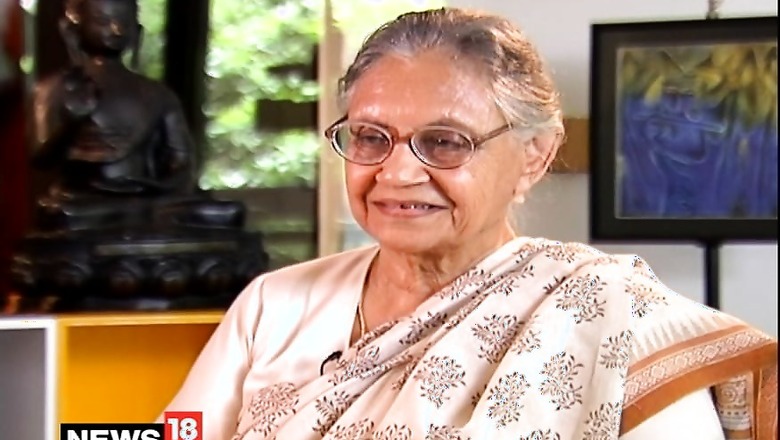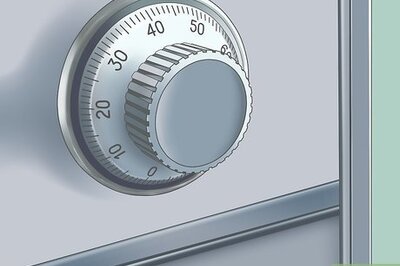
views
Last week, the Congress high command appointed veteran leader Sheila Dikshit as its Delhi unit president for the second time. The last time she was nominated to this post was more than two decades ago in the summer of 1998.
The situation for the party, however, is not very different from what it was then with the BJP on an ascendance and the minority voters harbouring a distrust for the Congress following the demolition of the Babri Masjid with PV Narasimha Rao at the helm as the prime minister. This had led to a rout of the party in the national capital in the 1991, 1996 and 1998 Lok Sabha polls, 1993 Assembly elections and 1997 municipal polls.
The state leadership lay in tatters with factional satraps Har Kishan Lal Bhagat, Jagdish Tytler and Sajjan Kumar, in addition to battling their own feuds, also contesting charges of pogrom of the Sikhs during the 1984 riots in the law courts. Today, the situation may not be as abysmal, but is somewhat similar.
Since its defeat in the Assembly polls in 2013, the Congress is battling to regain its vote bank, which travelled to the Aam Aadmi Party following Anna Hazare’s anti-corruption movement, with limited success. However, what goes in its favour is that the BJP in the city doesn’t enjoy the kind of sway it did in the 1990s with Atal-Advani, both closely associated with the city, at the helm of affairs and deeply rooted leaders like Madanlal Khurana and Sahib Singh Verma dominating the local unit.
Secondly, given the national mood, the Congress has the plausible chance of winning its voters back, especially the OBCs, Dalits and the Muslims from the AAP fold. No wonder the three working presidents — Devendra Yadav, Rajesh Lilothia and Haroon Yusuf — belong to these communities, respectively. Dikshit herself identifies with the urbane middle class, the Purvanchalis and the Sikhs. She is the daughter of a Sikh army officer married into a prominent Brahmin family of Uttar Pradesh.
What is, however, her biggest advantage is the record of good governance that she provided to the city during her 15-year-long term as the chief minister. In times when petty squabbles between the warring arms of city government structure lead to midnight assault on chief secretary at the chief minister’s residence, Dikshit’s tenure indeed provides a contrast. For more than anything else, Dikshit was known for managing contradictions in the governance structure of the National Capital Territory — NCT, as Delhi the state is officially known as.
But will Congress’s ride back to power in the city be as smooth as the script is being made out to be? First and foremost, Dikshit would have to bear the burden of accepting or rejecting an alliance with the Aam Aadmi Party (AAP). There are forces within the Congress party which were not very keen on having Dikshit back lest she become an impediment in their ‘pan-India’ plans of alliance with the regional forces.
Punjab chief minister Captain Amarinder Singh has been outspoken about his resistance to entering into any kind of an arrangement with the AAP, which still has some presence in Punjab, though fast diminishing. He has also been vocal about not having any arrangement with Arvind Kejriwal’s party even in Delhi, where AAP is in power.
On the other hand, Kejriwal wants a tie-up with the Congress not just in Delhi but in the three north Indian states of Punjab, Haryana and Delhi. The exit of activist-lawyer and former leader of opposition in Punjab Assembly HS Phoolka from the party, and the fiasco earlier over bringing resolution on the 1984 anti-Sikh riots in Delhi assembly, is a clear indicator that the AAP wants to hinge on the UPA-bandwagon at any cost.
Kejriwal’s advances were resisted by outgoing Delhi Congress president Ajay Maken, and Dikshit, too, in the recent times has not shown herself to be warming up to the idea personally and has instead preferred “leaving it to the party high command”. This has seen the AAP leaders losing patience and at times Kejriwal has even gone on a Congress-berating binge.
As I had mentioned in these columns a few weeks ago, AAP’s resounding victory in 2015 Assembly polls in Delhi was largely attributable to the strategic voting by the Muslims, Sikhs and Dalit voters. The vote share difference between the Congress and AAP in 2015 was to the tune of more than 40%. However, two years later, in the 2017 municipal polls, the gap between the two parties had been reduced to around 5%, and in the assembly bypolls which followed, the Congress gained the upper hand.
Today, the AAP’s perceptible strength hinges on Muslim voters, which in the national poll, in all likelihood, would go for a party which will stop Prime Minister Narendra Modi from taking oath of office for the second time. Moreover, in face of the aggressive posturing by the possible allies in the Opposition bloc, like the Samajwadi Party, Bahujan Samaj Party and the Trinamoool Congress, the Congress cannot afford to be weak-kneed for small gains like a maximum of seven seats in the national capital.
Dikshit’s return is important not just for the party to win the upcoming Lok Sabha polls, but to prepare ground to replace a tumbledown Arvind Kejriwal government when Delhi goes for Assembly polls in 2020. Thus, Dikshit’s homecoming to mainstream politics should not be for a short-term gain but for, in cricketing terms, playing a longish innings.
(The author is a senior journalist and political columnist. Views are personal)




















Comments
0 comment